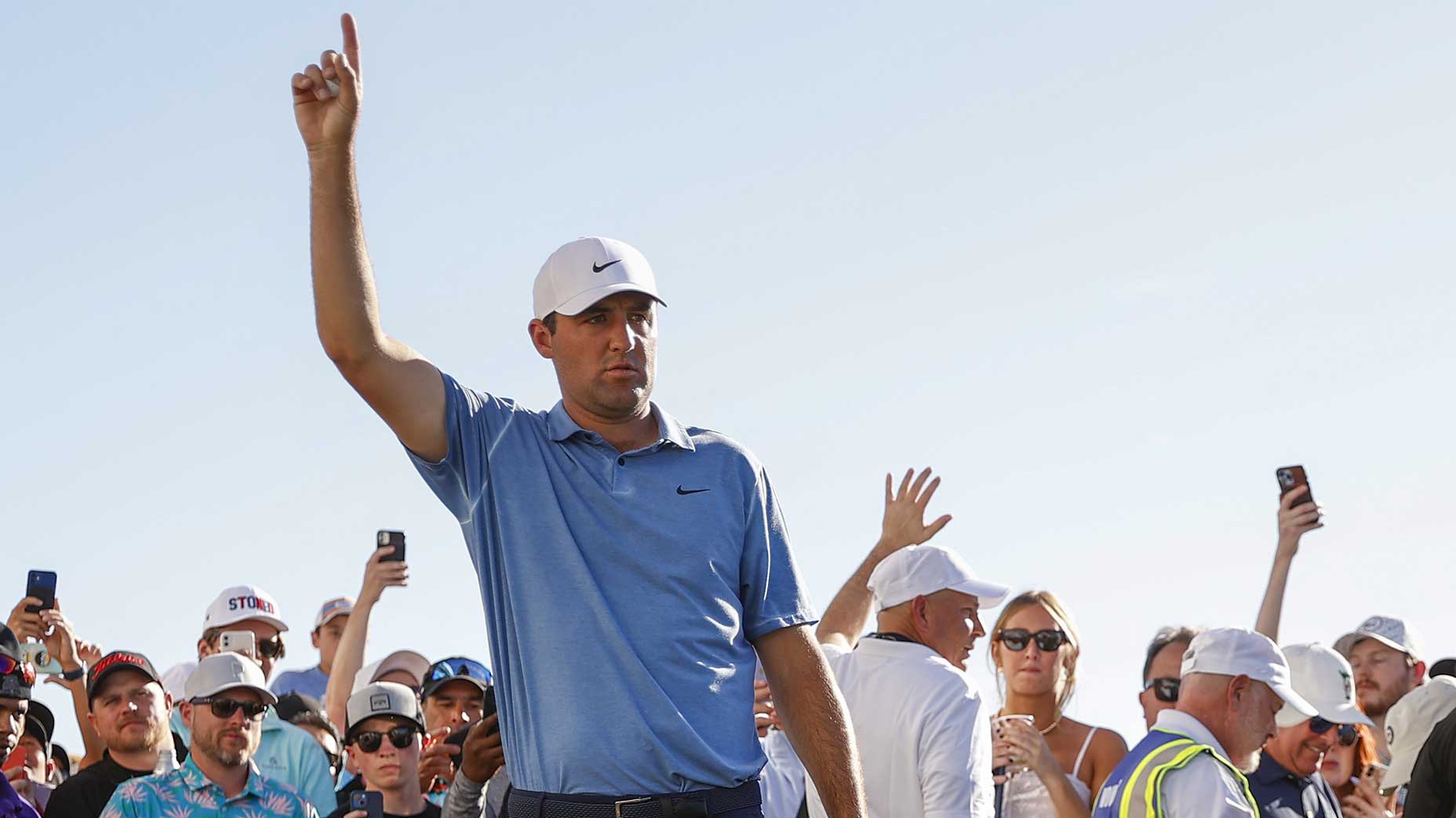Joel Dahmen was being humorous when, three years ago, he explained that there is a “PG-A” Tour, filled with the Tigers and the Rorys and the JTs, and then a “PG-B” Tour filled with a lot more people like him.
He wasn’t talking about Designated events back then. Rather, he was talking about bank accounts, popularity and time constraints. He didn’t really feel equal, even though at times his scorecard certainly said he was. On Thursday mornings, of course, none of that mattered. Within the top echelon of pro golf, the differences between the PGB Tour and the PGA Tour were mostly flattened. The best 125 players in the world could play basically any event they desired. They’d shoot their score and saw how it stacked up.
Looking back, there’s an irony to the setting where Dahmen shared those thoughts. We were in a board room at the Genesis Invitational, a tournament that has since become a Designated event — capital ‘D’ — which means Dahmen will have to work his buns off to qualify for. He’s one of the 100 best golfers on the planet, but that is no longer quite enough.
Wednesday’s news arrived in the form of a report from Golfweek and eventually a memo from commissioner Jay Monahan to the membership. The message: the biggest events on the Tour schedule, which feature mega-millions purses, are going to be more exclusive. Just because you’re on the PGA Tour doesn’t mean you’ll get in. Eight of the biggest tourneys — excluding the major championships, playoffs and Players — will be filled by the 50 players who played best last year, the next 10 players playing well this year, and five players playing really well recently. If you’re not among that group, welcome to the PG-B Tour.
To best understand what this means, we can look at Dahmen, who is ranked 34th in the current FedEx Cup and 89th in the world. Since he didn’t finish Top 50 last year, if next year’s rules were in place right now he would be spending Genesis Week hanging out at home. If he holds onto that 34th-place spot, he’ll be playing them all.
We can also look to one of Dahmen’s best friends and college roommates, Nick Taylor. The name should ring a bell. Taylor pushed Scottie Scheffler to his limit last month in Phoenix, beating Jon Rahm and the rest of the field in the process and eking out a solo second-place finish worth $2.18 million. Taylor entered the week ranked 51st in the FedEx Cup, earning his way into the field via a victory in 2020. Under 2024’s rules, he’d be in Scottsdale only because that’s where he lives.
The fact that Taylor wouldn’t have been in the field for a tournament he nearly won is the perfect illustration of why lower-level Tour pros may not like the new qualification standards. They’ve been uneasy about it in recent weeks, though members of golf’s upper class have the floor to speak out in press conferences. It’s all about access.
Life on the PGA Tour is a good life, period. That’s one of the main things Dahmen said back in early 2020. But there’s a saying that everyone in pro golf agrees upon, and it goes, Eat what you kill. It’s pretty self-explanatory: You get what you earn. But the PGA Tour always offered plenty to go around. Wednesday’s news complicated the food chain. It added restrictions to the hunting season. Eat what you’re allowed to kill.
The new system feels very rational. Monahan and those around him have rethought the Tour from the top down, rewarding its best performers and then worrying about the rest. They’ve worked out how it could make financial sense, a pressure that its competition at LIV Golf doesn’t yet feel. Business leaders would praise the system for its logic, and it’s business leaders who dominate the PGA Tour’s policy board. But there are people and traditions and norms on the other end of those decisions. The Tour’s new efficiencies can still impact the lives of more than a hundred Tour members. Those players are allowed to be disappointed, especially given they’ve had the same seat at the table for years.
Rory McIlroy was particularly judicuous two weeks ago, when I asked him who should play in special events with $20 million purses: “The best players should be playing in them, because ultimately the PGA Tour needs to be built around the best players because that’s what will maximize the value of the product.”
There goes that word again. Product. We’ve been using it a lot the last 12 months. What does it mean? How many people contribute to the product? We’ve never put a specific number to it, though we’ve gotten closer in recent years. We can agree that Collin Morikawa influences the product. But what about the influence of the many, many pros who are, on average, just one single stroke per round worse than he is?
What we know now is that clarifying the product meant clarifying the hierarchy. When Joel mentioned the PG-B Tour, we laughed. But now the PG-B Tour is official Tour policy. This week’s announcement was a blunt public declaration that there were two circuits playing as one. The haves and the have-nots? Not quite; the pros on Dahmen’s level are still doing just fine. They’re just one step further from the top level of the professional game, a level they already thought they’d reached. As Dahmen tweeted Wednesday evening, “It’s a good time to #playbetter.”
The author welcomes your comments, concerns, and any other notes at sean.zak@golf.com.
